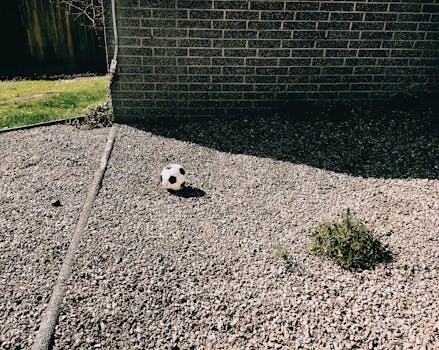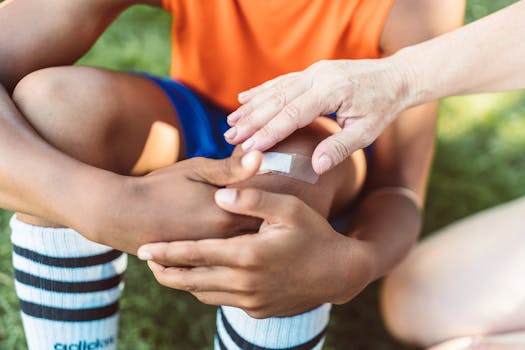Improving your game without a partner might feel overwhelming at first, but it is absolutely possible. With the right individual soccer drill routine and a set of structured solo soccer drills, you can sharpen your technical skills, increase confidence, and make training sessions as effective as playing with teammates. This guide will show you exactly how.
Practicing solo soccer drills without a partner
Many players think they need a full team or a coach to get better. In reality, some of the world’s best players built their foundations by training alone. A consistent individual soccer drill program can build touch, passing accuracy, and finishing ability. Training alone also allows flexibility: you choose the pace, intensity, and areas you want to improve.
One of the biggest challenges players face is figuring out how to practice when no one else is available. Thankfully, solo soccer drills make this possible. The goal is to replicate game-like situations using tools around you.
- Walls: A sturdy wall becomes your best teammate. Use it for passing, one-touch control, and volleys. Vary the distance to simulate both short and long passes.
- Rebounders: These portable nets send the ball back with unpredictable speed, improving reaction time.
- Cones and gates: They can act as defenders or passing targets. Simple setups provide endless drill variations.
A simple example: set up two cones as a gate, pass against the wall, receive the ball, and quickly dribble through the gate. This combination sharpens first touch, accuracy, and decision-making without anyone else on the field.
Equipment that elevates solo training
While you can start with just a ball, having basic equipment makes your individual soccer drill sessions more engaging and game-like.
- Rebounder: Perfect for passing, receiving, and shooting. It mimics a teammate returning the ball.
- Cones: Affordable and versatile. They help design dribbling courses, passing lanes, and small goals.
- Small goals: Adding small targets encourages accuracy when finishing.
- Weighted balls: A heavier ball improves strength and touch. Rotate between regular and weighted balls for variety.
You don’t need to invest in everything at once. Even two cones and a wall provide enough for hundreds of solo soccer drills. Equipment simply adds variety and motivation.
Progressions: From simple to game-speed
Training works best when drills evolve. If you only practice slow touches, you won’t prepare for the speed of a real match. That’s why progression matters in any solo soccer drill program.
- Simple: Start with static ball mastery. For example, inside-outside touches or stationary juggling.
- Intermediate: Add light movement. Try weaving through cones while maintaining control.
- Advanced/Game-Speed: Finish drills at full sprint, add time limits, or combine skills (pass off a wall, turn, then shoot quickly).
An example progression: begin with controlled dribbling through cones. Next, weave through cones faster while keeping your head up. Finally, complete the cone run, receive a wall pass, and finish into a small goal under time pressure.
Solo soccer drills in small spaces: Backyard or apartment
Not everyone has access to a full pitch. The good news? You can still improve dramatically in small areas. With creative solo soccer drills, even an apartment or backyard becomes a training ground.
- Ball Mastery: Toe taps, sole rolls, and quick inside touches build control in tight spaces.
- Juggling: This improves coordination, touch, and balance without needing much room.
- Mini Wall Passing: Use a small rebound surface to practice first touches and one-touch passes.
If space is very limited, focus on repetition and precision. Hundreds of controlled touches in a small room develop comfort on the ball. This approach links directly to our dedicated guide on [soccer drills at home].

Making solo training transfer to match play
One common frustration is feeling like solo practice doesn’t translate into game performance. To bridge the gap, add realism and pressure to drills.
- Decision-making layers: Instead of always dribbling through the same gate, set up two gates and choose randomly which one to attack.
- Time constraints: Give yourself five seconds to receive from the wall and finish.
- Match visualization: Imagine defenders or teammates around you during drills.
Solo soccer drills become powerful when they replicate match pace and unpredictability. Training with intensity ensures your skills remain useful under real-game pressure.
Core solo soccer drills categories
To build a balanced training routine, include drills across three essential categories: ball mastery, passing, and shooting. Each type of individual soccer drill develops a unique set of match-winning skills.
Ball mastery
Ball mastery means total comfort with the ball at your feet. These drills sharpen touch, balance, and control.
- Touches: Toe taps, inside/outside rolls, and step-overs. Repetition builds automatic control.
- Juggling: Start with your dominant foot, then switch to your weak foot. Add thighs and headers as you improve.
- Dribbling: Use cones to practice weaving at different speeds. Mix slow control with explosive sprints.
When practiced daily, ball mastery drills lay the foundation for every other skill.
Passing
Accurate passing is crucial in every match. Training alone can still develop consistency and vision.
- Wall passing: One-touch and two-touch passes against a wall improve both accuracy and control.
- Gate passing: Set two cones as a target and aim for clean passes through them.
- Rebounder work: Adds unpredictability, forcing quick reactions.
The key is variation: switch between left and right foot, one-touch and two-touch, short and long distances.
Shooting
Scoring goals requires more than power. Solo soccer drills focused on shooting improve placement and decision-making.
- Small goal shooting: Aim for corners instead of hitting as hard as possible.
- First-time finishing: Pass against a wall, receive the return, and shoot instantly.
- Target practice: Use cones or markers in the corners of a goal for accuracy training.
Mixing finishing drills with sprints and passes makes them game-like, preparing you for real match scenarios.
Sidenote: Injury risk and overload
Solo players often repeat drills hundreds of times, leading to fatigue or overuse injuries. Warm up properly, stretch, and avoid doing too much too soon. Listen to your body. Remember: quality of repetition matters more than quantity. For more detail, see [How to improve soccer recovery and prevent injuries].

Solo soccer drills takeaway
Training alone doesn’t have to feel limited. With structured solo soccer drills and focused progression, you can replicate match situations, sharpen core skills, and grow as a player faster than you think. Whether you practice in your backyard, apartment, or on a pitch, every individual soccer drill brings you closer to becoming more confident on the field.
Start simple, stay consistent, and push toward game-speed intensity. That’s how solo practice transforms into real match performance.
If you’re ready to take your training to the next level, check out The ultimate individual soccer training guide for comprehensive tips and progressions to maximize your solo practice.
